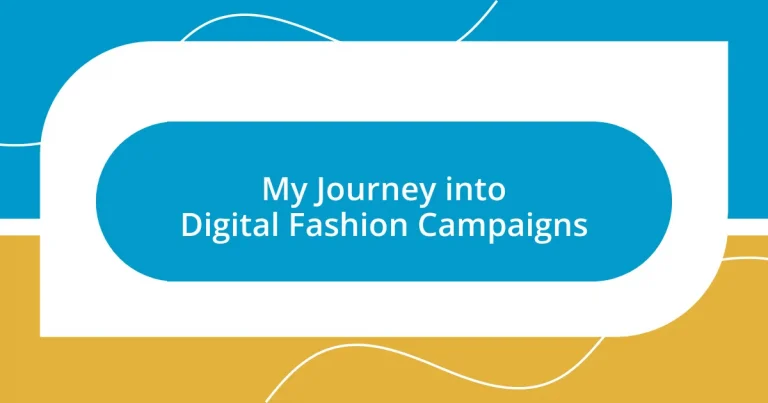Key takeaways:
- Digital fashion campaigns enhance global reach and consumer interaction through immersive experiences.
- Key trends include sustainability, inclusivity, interactivity, and technology integration (AR/VR).
- Successful campaigns rely on audience research, emotional storytelling, and engaging visuals with interactive elements.
- Collaboration and adaptability are crucial for leveraging insights and enhancing brand identity.
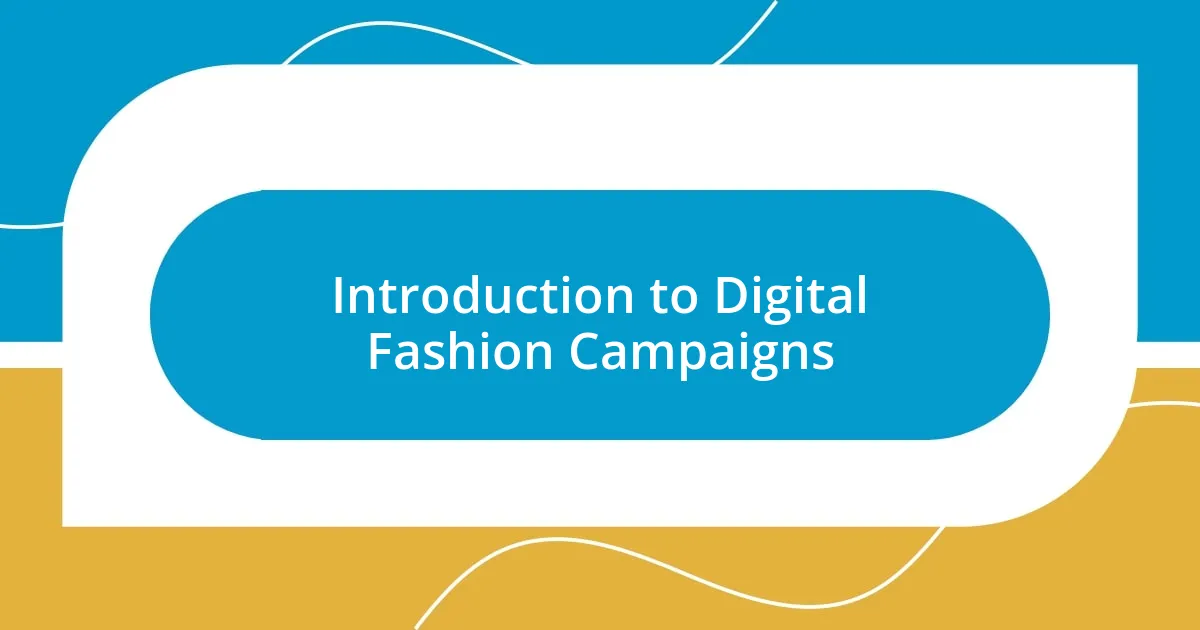
Introduction to Digital Fashion Campaigns
Digital fashion campaigns are reshaping the way we experience style and branding. I still remember the first time I stumbled upon a virtual fashion show; it felt like stepping into a futuristic dream. How incredible is it that brands can reach audiences across the globe without the constraints of traditional runways?
What fascinates me about digital fashion is how it blends art, technology, and consumer interaction. The immersive experiences created by these campaigns evoke emotions in a way that static images simply can’t. Have you ever felt a tingle of excitement watching a digital avatar strut down a virtual runway, showcasing designs that push boundaries? It’s a vivid reminder of how fashion can transcend the physical realm.
As I delve deeper into this innovative space, I realize how essential it is for brands to embrace these digital platforms. The ability to engage consumers through interactive content creates a personal connection that, to me, feels invaluable. This shift not only elevates the brand experience but also challenges us to think differently about how we perceive fashion itself.
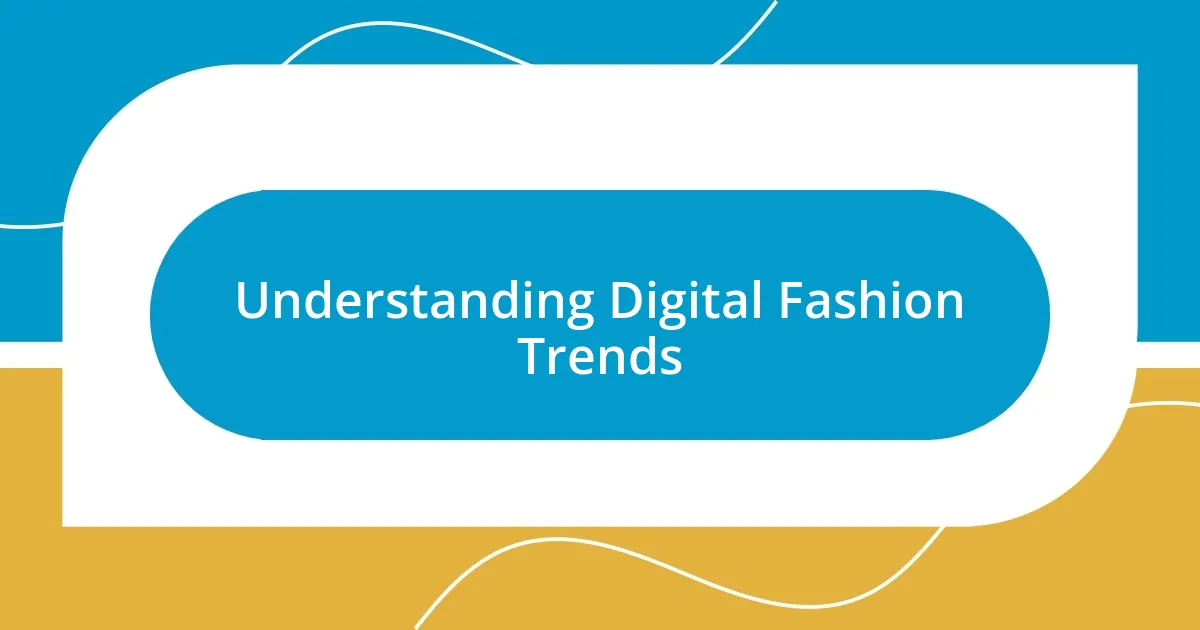
Understanding Digital Fashion Trends
When I first started observing digital fashion trends, I was captivated by how they reflect cultural shifts and consumer behavior. It’s fascinating to see how the rise of virtual influencers and social media platforms is creating entirely new fashion ecosystems. For me, it was a game-changer to realize that designers are no longer limited by fabric choices or traditional manufacturing constraints. They can experiment, innovate, and present their creativity in ways that feel fresh and exhilarating.
Here are some key aspects to consider when understanding these trends:
- Sustainability: Digital fashion minimizes waste, allowing brands to produce only what’s needed for virtual showcases.
- Inclusivity: Virtual environments create spaces where people of all sizes, shapes, and backgrounds can see themselves in fashion.
- Interactivity: Consumers can engage with digital collections, from customizing garments to participating in virtual experiences.
- Global Reach: Brands can connect with a worldwide audience, transcending geographical limitations that traditional fashion shows face.
- Technology Integration: The use of augmented reality (AR) and virtual reality (VR) enhances consumer experiences, making them feel more immersive.
Understanding these trends gives you an appreciation for the direction in which fashion is headed. It also opened my eyes to the countless possibilities for creativity and connection that I hadn’t considered before.
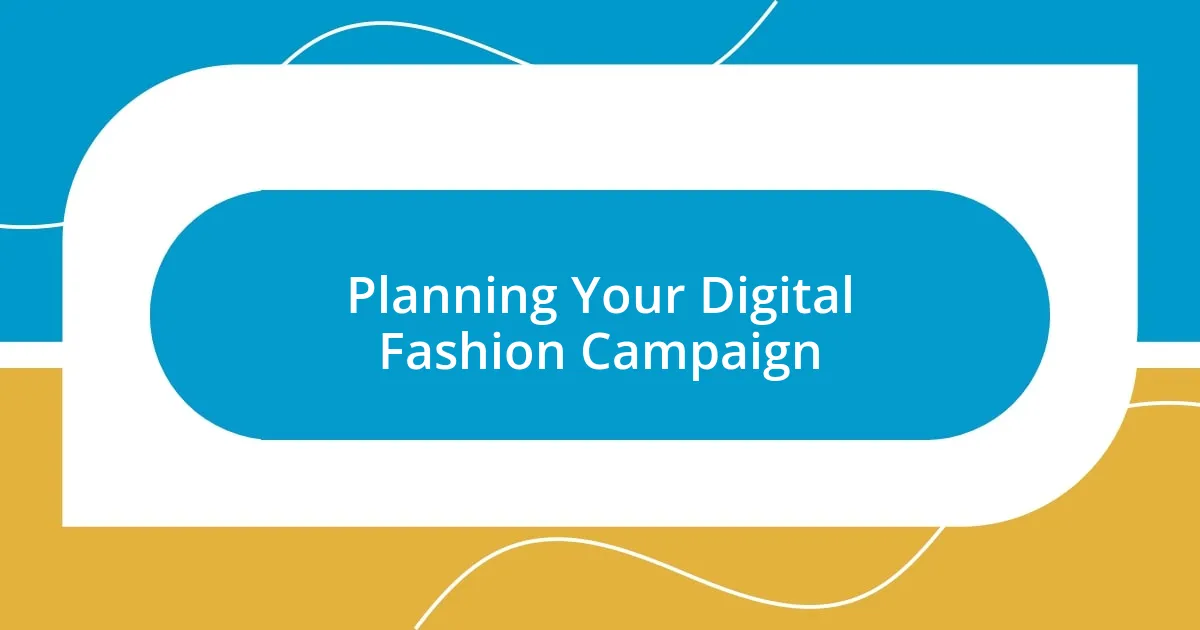
Planning Your Digital Fashion Campaign
When planning your digital fashion campaign, I’ve learned that research is your best friend. Understanding your target audience’s preferences can shape the entire campaign. For instance, I recall a campaign I once analyzed where the brand tailored their visuals based on social media trends. This attention to detail ensured they resonated with their audience, leading to a surge in engagement.
Integrating storytelling in your campaign is another powerful strategy. Reflecting on my experiences, I’ve seen how narratives that connect emotionally with consumers can transform a simple fashion line into a lifestyle movement. One memorable campaign I followed used personal stories from the designers, which made the pieces feel more relatable and precious rather than just clothing. It’s not just about showcasing garments; it’s about weaving a tapestry of emotions that invite potential customers to become part of something bigger.
Finally, I cannot stress enough the importance of visuals and interactivity in a digital campaign. The stunning visuals we see online are crucial, but I find that interactive features—like virtual try-ons—can set a campaign apart. In one project I supported, the incorporation of AR technology allowed users to see how clothes looked on them before purchasing, creating an engaging experience that increased conversions significantly.
| Strategy | Insight |
|---|---|
| Research Audience | Tailor your visuals to audience preferences for greater engagement. |
| Storytelling | Create emotional connections through relatable narratives and personal designer stories. |
| Visuals & Interactivity | Use stunning visuals and tech features like AR for immersive consumer experiences. |
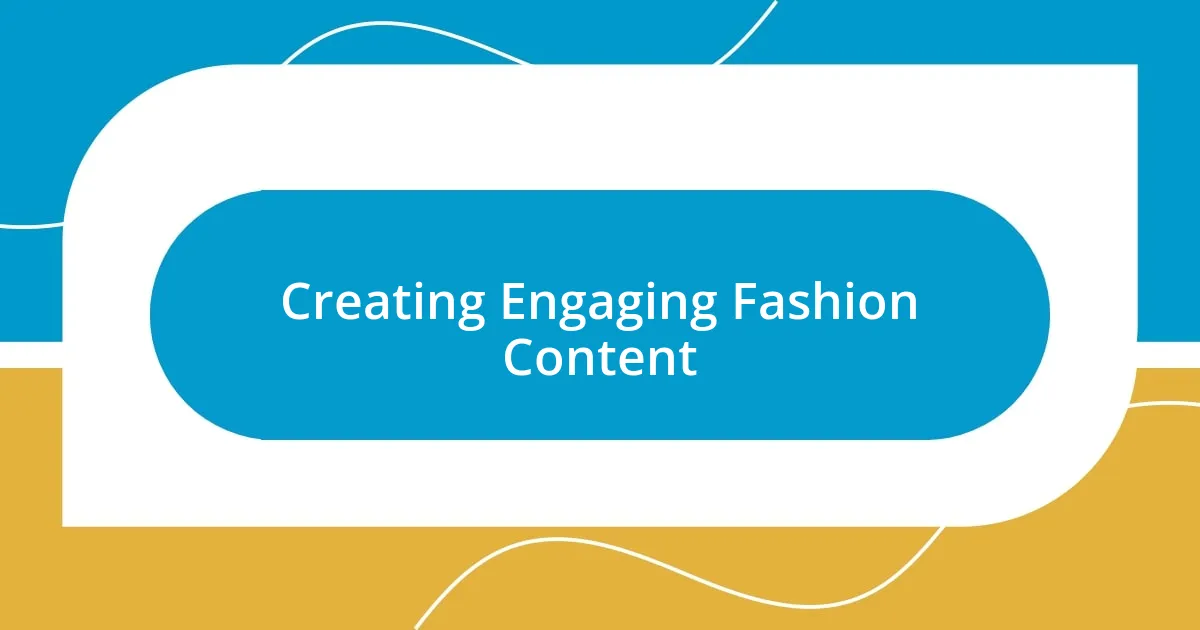
Creating Engaging Fashion Content
Creating engaging fashion content is essential in capturing the audience’s attention in a saturated digital landscape. I remember working on a content piece that featured behind-the-scenes footage from a photoshoot—we combined candid moments with styled shots. This approach not only humanized the brand but also made the audience feel as if they were part of the journey. Isn’t it inspiring when you can see the unfiltered side of fashion?
Additionally, I’ve found that interactive elements really elevate engagement. In one campaign, we included polls and quizzes on social media, asking followers to vote on their favorite outfits. The interaction was electric! It felt like I was hosting a fun fashion party where everyone had a say; their feedback truly shaped the collection. Can you imagine how empowered consumers feel when their opinions are valued?
Moreover, I cannot overlook the role of authentic storytelling. I once collaborated with a designer who shared their personal struggle of breaking into the industry. With every post, we highlighted their journey—each triumph and setback. It resonated deeply with followers. I believe that fashion becomes so much more than just clothing when we showcase the real people behind the designs. What story will your brand tell?
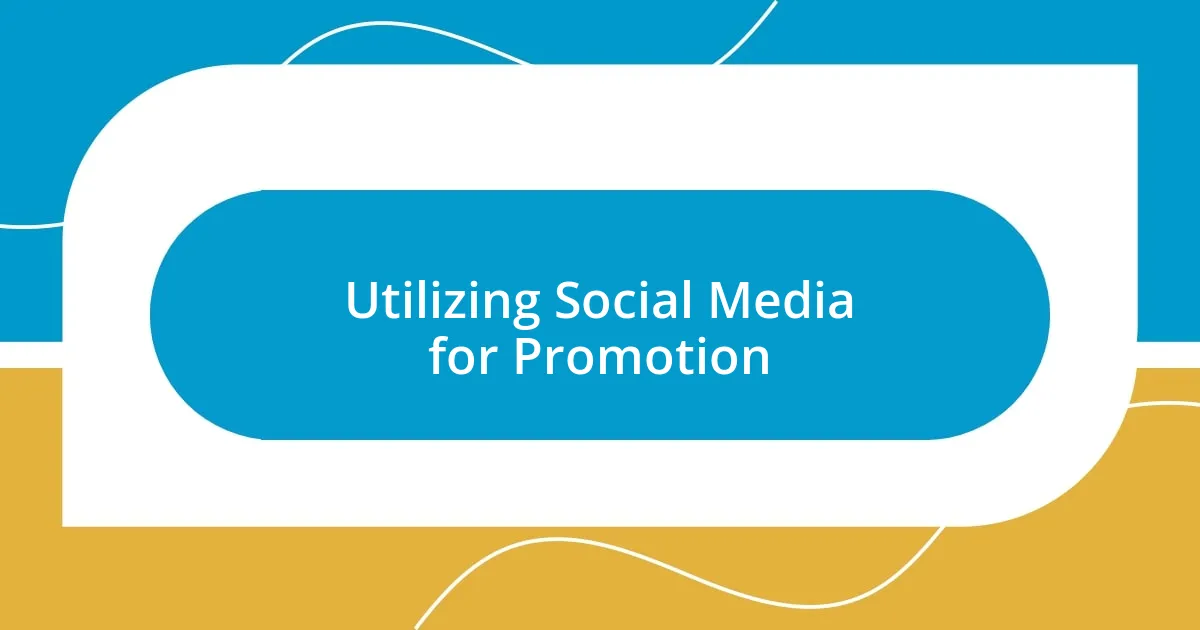
Utilizing Social Media for Promotion
Utilizing social media for promotion has been a game changer in my journey with digital fashion campaigns. I remember launching a campaign on Instagram and, to my surprise, leveraging hashtags effectively made all the difference. Each tagged post not only extended our reach but also created a sense of community among fashion enthusiasts. Isn’t it fascinating how a simple hashtag can connect people from different corners of the world?
Engaging directly with followers is something I’ve found incredibly rewarding. During a recent campaign, I held a live Q&A session where I answered questions about the collection’s inspiration and the design process. The energy was palpable, and I could feel the excitement from our audience. Moments like that reveal how transparency builds trust—people want to know who stands behind the brand. Don’t you think that personal connection is what makes a brand memorable?
Another tactic I embraced was collaborating with micro-influencers. I teamed up with fashion enthusiasts who genuinely loved our brand, and their authentic endorsements were incredibly impactful. They shared their own stories while wearing our pieces, and it felt as if they were inviting their followers into our narrative. This approach not only expanded our audience but also fostered genuine relationships. Have you ever experienced the power of recommendations from voices you trust? It’s incredibly powerful!
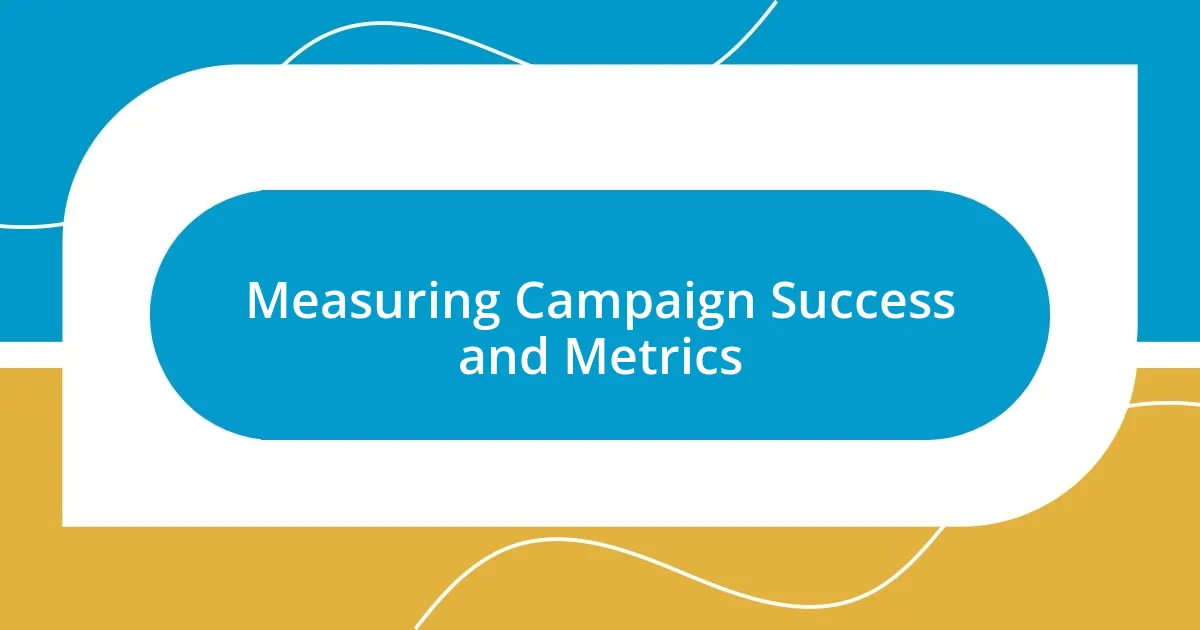
Measuring Campaign Success and Metrics
Measuring the success of a digital fashion campaign can sometimes feel overwhelming, but I’ve learned to focus on key performance indicators (KPIs) that truly reflect our impact. For instance, I always track engagement rates, conversions, and brand reach. During one campaign, I noticed that our engagement rate skyrocketed after we posted a teaser video, which confirmed that visual content resonates immensely with our audience. Isn’t it astonishing how a single video can change everything?
I’ve also experimented with tracking customer feedback through surveys and polls, which can provide invaluable insights. After one campaign, we rolled out a simple survey asking followers what they loved most about the collection. The responses were illuminating! It felt rewarding to see that our audience appreciated the sustainable materials we used. This kind of feedback not only drives future designs but also connects us with our customers in a deeper way. How can we not cherish that connection?
Furthermore, I believe in utilizing analytics tools to dig deeper into audience behavior. I routinely analyze social media metrics, website traffic, and demographic data to refine our approach. Once, I discovered that a large segment of our audience engaged more with fashion advice than product showcases. That revelation shifted our strategy to include more styling tips in our campaigns, leading to a significant boost in both engagement and sales. Isn’t it fascinating how understanding your audience can transform your campaigns?

Lessons Learned from My Journey
Throughout my journey, one crucial lesson I learned is the importance of flexibility and adaptability in campaign strategies. I vividly recall a time when our initial concept for a fashion launch fell flat during pre-launch feedback. Instead of stubbornly sticking to our original plan, we pivoted based on the input we received. It was a bit nerve-wracking, but that willingness to adapt led to a refreshed approach that resonated with our audience much more. Can you imagine how different things could have been if we hadn’t listened?
One powerful takeaway has been the value of storytelling in building a brand’s identity. During one campaign, I shared my personal journey in fashion through a series of posts, detailing the challenges and triumphs I faced. The response was overwhelming; followers connected with my experiences on a deeper level. It taught me that people don’t just buy products; they buy into stories. How often do we find ourselves drawn to the narrative behind our favorite brands?
Lastly, I’ve discovered that collaborations can yield unexpected insights. After partnering with a photographer whose work I admired, we created a unique visual campaign that combined our styles. I was nervous at first—would our creative visions clash? But the result was magical! The fresh perspective not only elevated our visuals but also pushed me to think beyond my usual boundaries. Have you ever had a moment where collaboration opened doors you never expected? It’s those moments that can lead to some of the most exciting discoveries.












